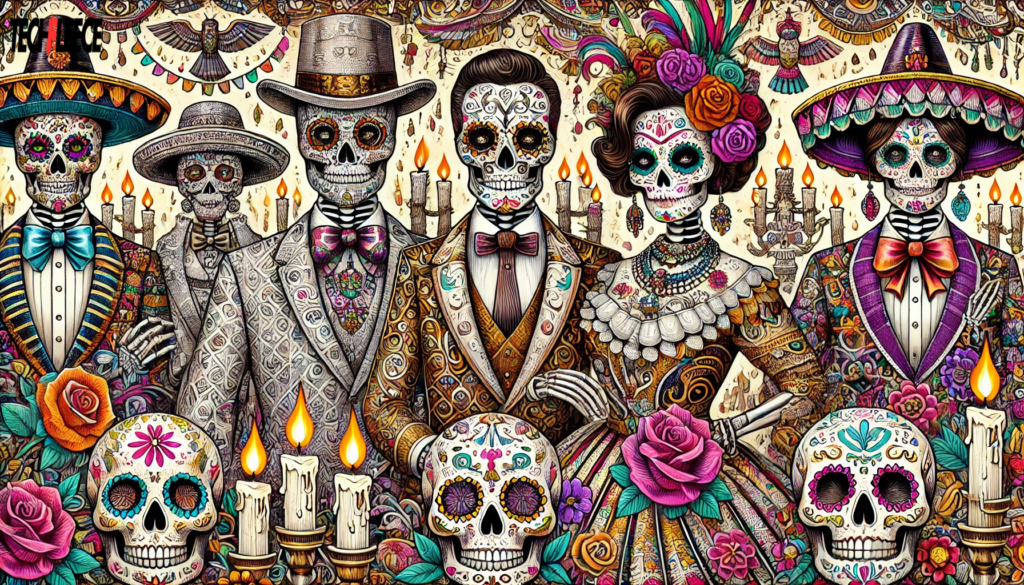The dibujo:qlxnsxwykhc= catrines, also known as Catrinas, have become cultural symbols that transcend their original artistic depictions. They are often depicted in elaborate skeletal form, dressed in European aristocratic attire, symbolizing death but with a celebratory and ironic twist. The keyword dibujo= Catrines refers to artistic renderings of these figures, which are increasingly popular for Day of the Dead celebrations.
Table of Contents
Día de los Muertos (Day of the Dead) is a Mexican holiday celebrated every year from October 31 to November 2, honoring deceased dibujo:qlxnsxwykhc= catrines ones through offerings, decorations, and art. The Catrina figure, with her ornate dresses and skeletal form, has become the most recognized symbol of this holiday. Her image appears in paintings, drawings, and even as street art, gaining popularity globally.
The Rise of Catrines in Artistic Expression
In recent years, dibujo:qlxnsxwykhc= catriness drawings have transcended the boundaries of traditional art forms. Artists today explore various interpretations of Catrinas, incorporating elements from modern media, contemporary fashion, and even political themes. These drawings are often created as part of larger Día de los Muertos festivities or as independent works of art in galleries and public spaces. Some of these artworks emphasize the historical symbolism of the Catrina figure, while others reimagine her in bold new contexts—like street art or digital creations.
For instance, artists from around the world now contribute to the legacy of dibujo:qlxnsxwykhc= catrines by blending traditional Mexican motifs with global artistic trends, creating artwork that speaks to universal themes of identity, mortality, and memory. The visual appeal of these figures, with their intricate details and vibrant colors, continues to attract both artists and admirers, making them a compelling subject for drawings and artistic projects.
How to Draw dibujo:qlxnsxwykhc= catriness: A Creative Guide
Drawing your own Catrina requires an understanding of her symbolic elements. Start with the skeletal structure, emphasizing the hollow eyes and toothy smile, while keeping the figure feminine and elegant. The key to a successful Catrina drawing lies in her attire—her hat, often adorned with feathers or flowers, and her elaborate dress, reminiscent of European aristocracy. The juxtaposition of the macabre skeletal form with opulent clothing represents the blending of life and death, wealth and decay.
For those looking to create their own dibujo:qlxnsxwykhc= catrines drawings, resources are readily available. Many websites offer printable templates or guides to help budding artists start with a basic outline and then add details like floral patterns or intricate accessories. The creative freedom in Catrina artwork is vast, allowing artists to express both traditional and modern influences in their work.
dibujo:qlxnsxwykhc= catrines in Modern Culture
The popularity of dibujo:qlxnsxwykhc= catrines has grown beyond the boundaries of Mexican culture. In modern media, from animated films like “Coco” to Catrina-themed fashion shows and public parades, her image continues to evolve while maintaining its cultural significance. Festivals across Mexico, particularly in cities like Aguascalientes and Mexico City, feature grand Catrina parades, where participants dress up in elaborate costumes, painting their faces to resemble skeletons. These events celebrate the beauty of death in a festive atmosphere filled with music, food, and art.
In the digital age, dibujo:qlxnsxwykhc= catrines drawings and illustrations have also found a new audience online. Artists from around the world share their unique interpretations on platforms like Pinterest and Instagram, where fans of Mexican culture and art can download, share, and draw inspiration from these striking images. As the world becomes more interconnected, Catrina stands as a symbol not only of Mexican tradition but also of the universal human experience of life, death, and remembrance.
Conclusion
The figure of Catrina—whether viewed as a critique of societal norms, a celebration of Mexican culture, or a universally appealing artistic motif—continues to inspire artists and audiences alike. Through the medium of dibujo= dibujo:qlxnsxwykhc= catrines, we can explore the deep cultural significance behind this skeletal figure, while also appreciating the artistry and creativity that have kept her legacy alive for over a century.
Read More justin tesa







